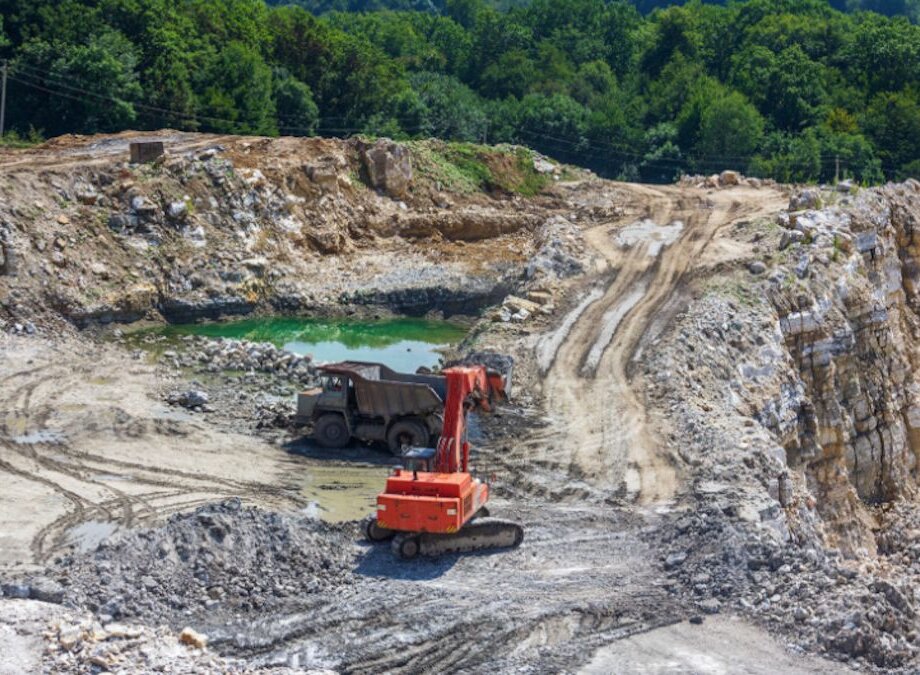China’s Lithium Mine Shutdown: A Global Supply Shock
The world’s lithium market has been jolted by the sudden shutdown of the Jianxiawo mine in Yichun, Jiangxi province, China. Operated by Contemporary Amperex Technology Co. Limited (CATL)—the world’s largest electric vehicle (EV) battery manufacturer—this mine’s closure has triggered a surge in lithium prices, sent mining stocks soaring, and raised urgent questions about the future of the global battery supply chain.
- China’s Lithium Mine Shutdown: A Global Supply Shock
- Why Did CATL Shut Down Its Jianxiawo Mine?
- Immediate Market Reaction: Prices and Stocks Surge
- How Much Lithium Is at Stake?
- Broader Implications: Supply Chains, EVs, and the Clean Energy Transition
- CATL’s Position: Minimal Impact on Battery Production?
- What’s Next for the Global Lithium Market?
- In Summary
On August 9, 2025, CATL announced it was halting operations at its flagship lithium mine after failing to renew its mining permit. The shutdown is expected to last at least three months, but could extend further depending on regulatory reviews. The Jianxiawo mine, often called the “Lithium Capital of Asia,” is a critical node in the world’s lithium supply, producing between 3% and 6% of global lithium carbonate equivalent (LCE) output. The ripple effects of this closure are being felt across continents, from China to Australia, the United States, and beyond.
Why Did CATL Shut Down Its Jianxiawo Mine?
The immediate cause of the shutdown was regulatory: CATL’s mining license expired, and the company was unable to secure a timely renewal. However, the story runs deeper. China’s government has recently tightened oversight of its mining sector, especially for strategic minerals like lithium. The revised Mineral Resources Law, effective July 2024, centralized permit approvals under the Ministry of Natural Resources and closed loopholes that previously allowed lithium extraction under permits for other minerals.
This regulatory crackdown is part of a broader “anti-involution” campaign—a policy initiative aimed at curbing overcapacity, enforcing compliance, and ensuring sustainable resource management across fast-growing sectors such as lithium, steel, and coal. The government’s goal is to prevent reckless expansion, stabilize prices, and protect the environment. In the words of a Bank of America analyst:
“The mine’s closure, combined with other mines in the Yichun region, affects over 11% of global lithium supply. This is a clear signal that China is serious about re-pricing its strategic resources and enforcing compliance in the mining sector.”
CATL’s mine was also facing economic headwinds. The cost of producing lithium carbonate from lepidolite ore at Jianxiawo is estimated at RMB 100,000 (about $13,920) per ton—well above current market prices, meaning the mine had been operating at a loss. This financial pressure, combined with regulatory scrutiny, made the shutdown almost inevitable.
Immediate Market Reaction: Prices and Stocks Surge
The global market responded instantly to the news. Lithium carbonate futures on the Guangzhou Futures Exchange jumped by the daily limit of 8%, closing at 81,000 yuan (about $11,280) per ton for November delivery. Spot prices in China also climbed, reaching their highest levels since February. On international exchanges, shares of lithium producers soared:
- Tianqi Lithium Corp. and Ganfeng Lithium Group Co. surged by up to 21% in Hong Kong.
- Australian miners like Pilbara Minerals and Liontown Resources saw gains of 16% to 25%.
- US-based Albemarle Corp. and Lithium Americas Corp. rose by over 15% and 13%, respectively.
Investors and traders, anticipating tighter supply and higher prices, rushed to buy up lithium stocks. The Global X Lithium & Battery Tech ETF hit a nine-month high, reflecting the sector’s renewed optimism.
Yet, some analysts urge caution. While the price spike is dramatic, the fundamentals of the lithium market—marked by recent oversupply and falling prices—remain complex. Lithium prices had tumbled nearly 90% since their peak in late 2022, forcing many high-cost mines worldwide to close or delay projects. The CATL shutdown is a major supply shock, but whether it will reverse the broader price slump remains to be seen.
How Much Lithium Is at Stake?
The Jianxiawo mine is one of the world’s largest sources of lithium carbonate, producing between 46,000 and 65,000 tons of LCE annually. This represents about 6% of global supply and 20% of China’s domestic output. The shutdown is expected to reduce China’s monthly lithium carbonate production by 8%, or about 5,000 to 6,000 tons. When combined with other mines in the Yichun region, the potential impact could reach over 11% of global supply if further shutdowns occur.
China’s dominance in lithium refining and production means that any disruption in its supply chain can have outsized effects on the global market. The country is expected to surpass Australia as the world’s largest lithium producer by 2026, and its battery manufacturers—led by CATL—hold a commanding share of the global EV market.
Regulatory Uncertainty and the September 30 Deadline
Local authorities in Yichun have requested reserve reports from eight other lithium miners, with a deadline of September 30. This move follows audits that uncovered non-compliance in registration and approvals. The outcome of these reviews will be critical in determining whether the CATL shutdown is an isolated incident or the beginning of a broader industry shakeup.
Analysts warn that if more mines are forced to halt operations, the supply shock could deepen, pushing prices even higher and increasing volatility in the lithium market.
Broader Implications: Supply Chains, EVs, and the Clean Energy Transition
Lithium is a cornerstone of the clean energy economy. It is essential for manufacturing rechargeable batteries used in electric vehicles, grid storage, smartphones, and laptops. As the world accelerates its shift toward renewable energy and electrified transport, stable and affordable lithium supplies have become a strategic priority for governments and industries alike.
CATL’s shutdown has underscored the fragility of global supply chains. Automakers, already grappling with chip shortages and logistical disruptions, now face the prospect of higher battery costs and tighter competition for raw materials. Some may be forced to import more lithium, raising costs and complicating production schedules.
China’s regulatory crackdown is also prompting other countries to accelerate their efforts to diversify lithium sources. The US and European Union are investing in domestic mining and refining projects, while emerging markets in Africa and South America are ramping up production. Africa, for example, is projected to supply 18% of global hard-rock lithium by 2030.
Investment Opportunities and Risks
The supply shock has created both opportunities and risks for investors. Shares of lithium producers have rallied, especially those with lower production costs or diversified portfolios. Australian and American miners, as well as companies involved in lithium recycling, are seen as potential beneficiaries of the supply squeeze.
However, the lithium market remains highly cyclical and volatile. Prices could fall again if production ramps up elsewhere or if EV demand slows. Geopolitical tensions, particularly between China and the US, add another layer of uncertainty. Investors are advised to diversify their portfolios and stay informed about global trends in EV adoption and battery technology.
CATL’s Position: Minimal Impact on Battery Production?
Despite the scale of the shutdown, CATL has stated that the closure will have minimal impact on its battery production. The company’s vertically integrated business model—spanning mining, refining, cathode material production, and battery manufacturing—gives it flexibility to source lithium from other suppliers or import as needed.
Still, the loss of a major domestic source could raise costs and complicate logistics, especially if the shutdown drags on or if further regulatory actions hit other mines. CATL’s aggressive investments in securing long-term supplies of lithium and other critical minerals have been central to its dominance in the EV battery market, but the current situation highlights the risks of over-reliance on any single region or supply chain.
What’s Next for the Global Lithium Market?
The lithium market is at a crossroads. After years of oversupply and price declines, the regulatory-driven supply shock in China could mark the beginning of a structural rebalancing. Fastmarkets projects that the global lithium surplus, which stood at 175,000 tonnes in 2023, will shrink to just 10,000 tonnes in 2025, with a possible deficit emerging in 2026 as demand continues to grow.
Electric vehicle sales are still rising, with global lithium consumption up 29% in 2024 and EV sales up 35% in the first quarter of 2025. The world’s push for clean energy and electrification is expected to drive lithium demand even higher in the coming years.
However, the path forward is uncertain. Much will depend on how quickly China’s regulatory environment stabilizes, whether other countries can ramp up production, and how the industry adapts to new supply and demand dynamics. The September 30 deadline for reserve reports in Yichun will be a key moment to watch.
In Summary
- CATL’s shutdown of its Jianxiawo lithium mine in Yichun, China, has removed up to 6% of global lithium supply, triggering a surge in prices and mining stocks worldwide.
- The closure was driven by regulatory changes, permit expiration, and economic pressures from low lithium prices.
- China’s crackdown on overcapacity and non-compliance in the mining sector could lead to further supply disruptions, with a critical regulatory deadline looming on September 30.
- Lithium is essential for EV batteries and the clean energy transition, making stable supply a global priority.
- The supply shock has created both opportunities and risks for investors, with the market remaining highly volatile and sensitive to regulatory and geopolitical developments.
- CATL claims minimal impact on its battery production, but the broader implications for the global supply chain are significant.
- The lithium market may be entering a new phase of structural rebalancing, with demand expected to outpace supply in the coming years if regulatory and market trends continue.












